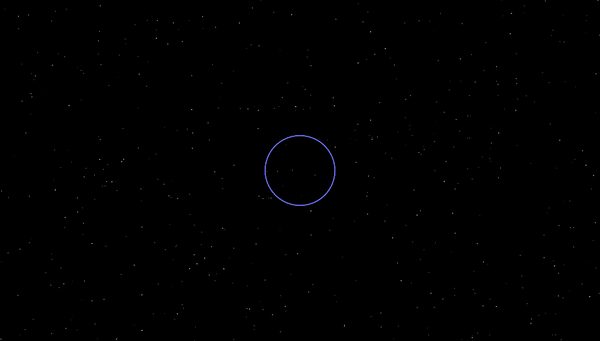Oculus is a class that lets you create and animate strange shapes. It does so by drawing thousands of ellipses on the screen with the help of the popular sin() and cos() functions. Changing the parameters will give you a lot of different shapes.
You need to initialize an Oculus object with a boolean value.
If is set to true, it will stop drawing after a few seconds (when using the draw() method), by reducing the size of its ellipses.
If is set to false, it won't stop drawing.
On other methods, the result may be different.
You can create and animate the shapes just by calling one of the following methods:
- Draws default eye statically. Run this only in setup()
- Draws default animated eye (as shown above).
- Draws a wide variety of shapes depending on the parameters
- float x: x-coordinate of the shape
- float y: y-coordinate of the shape
- float size: size of the shape
- float frec1: x-coordinate for sin()
- float frec2: y-coordinate for cos()
- float speed: speed of counter used by the Oculus for sin() and cos()
- int density: density of ellipses drawn
- float thickness: thickness of ellipses drawn
- Draws default circle if the Oculus is initialized on
false
- A variant of the default eye. Run it with the Oculus initialized on
false.- float c2: speed of the shape
- Draws an eye-like shape and changes depending on the parameters
- float xPos: x-coordinate of the shape
- float yPos: y-coordinate of the shape
- float size: size of the shape
- int amplitude: value that multiplies the cos() function
- Draws a circle-like shape and changes depending on the parameters
- float xPos: x-coordinate of the shape
- float yPos: y-coordinate of the shape
- float size: size of the shape
- float frec1: x-coordinate for sin()
- float frec2: y-coordinate for cos()
- float thickness: thickness of ellipses drawn
- int amplitude: value that multiplies the cos() function
- Draws
cantstars in the background- int cant: ammount of stars in the background
- Try not only different (and variable!) values for the parameters, but also different combinations by using (or not) functions like background() and initalizing the Oculus on
trueorfalse
float x; //centered x
float y; //centered y
float cc=0; //counter for variations
Oculus figure;
void setup() {
size(1920, 1080);
background(0);
noStroke();
x= width/2;
y= height/2;
figure= new Oculus(true);
figure.stars(700);
}
void draw() {
figure.eye2(x, y, cc*10, cc*0.05);
cc+=0.1;
}float x; //centered x
float y; //centered y
float cc=0; //counter for variations
Oculus figure;
void setup() {
size(1920, 1080);
background(0);
noStroke();
x= width/2;
y= height/2;
figure= new Oculus(false);
}
void draw() {
background(0);
figure.circle(x,y, (sin(cc*0.05)*300)+200, 0.06, sin(cc*0.1)*0.2, 0.01, 0.1);
cc+=0.1;
}float x; //centered x
float y; //centered y
float cc=0; //counter for variations
Oculus figure;
void setup() {
size(1920, 1080);
background(0);
noStroke();
x= width/2;
y= height/2;
figure= new Oculus(true);
figure.stars(700);
}
void draw() {
figure.eye2(cc);
cc+=0.1;
}Ale Cominotti - 2020
